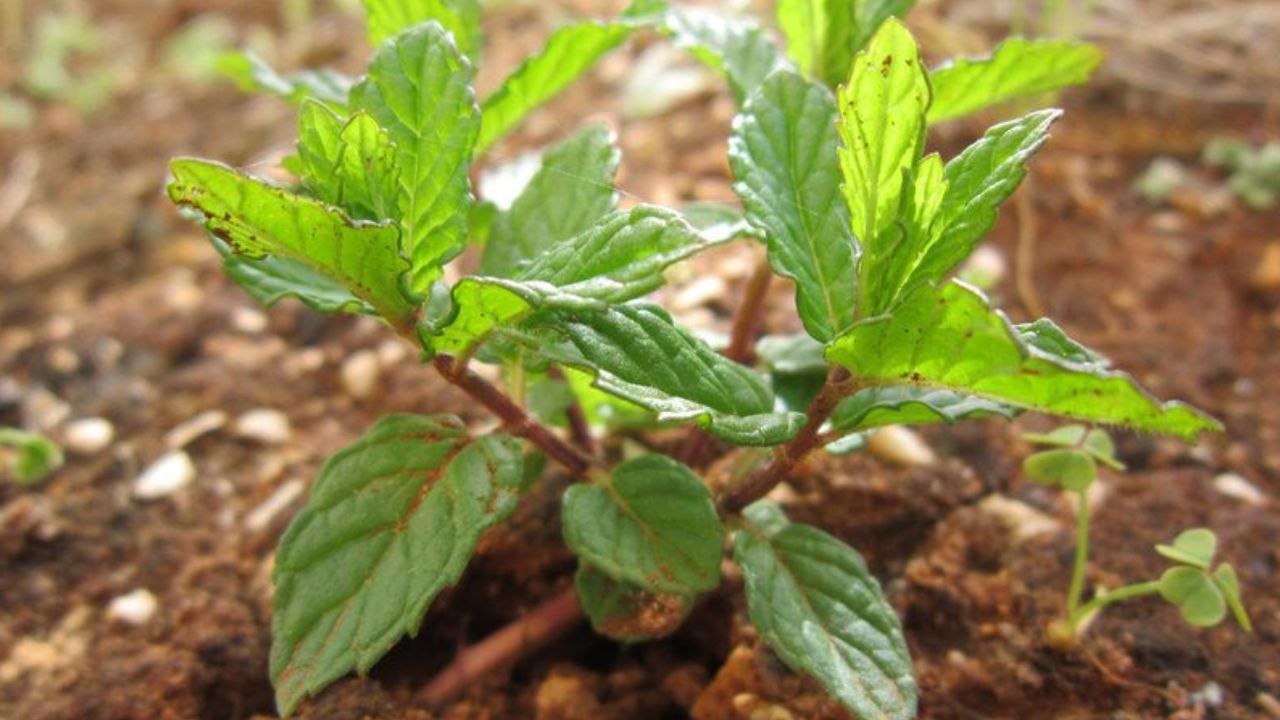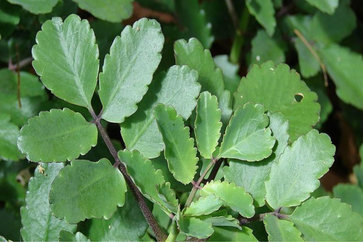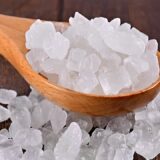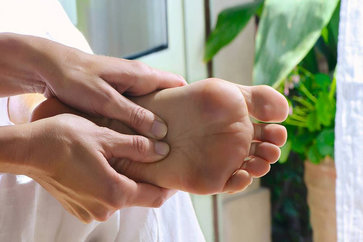Mint Leaves – How to Make Pudina Tea, Juice & Chatni?
Mint herb is commonly known as Pudina or Podina, it is one of the most widely used aromatic plants in day-to-day life.
There are many varieties of mint and can easily be grown in the garden. All the mint has their particular flavor; the most common are peppermint (Mentha x Piperita) and spearmint (Mentha spicata).
Pudina herb has also been widely known for its innumerable health benefits besides culinary purposes. Pudina is an important herb of Ayurveda and is used as the main ingredient since time immemorial for the preparation of different ayurvedic medications.
Mint leaves in Ayurveda
In Ayurveda, it is used for digestion, for respiratory problems, to prevent nausea, depression, and bad breath. Some people might not like the bitter taste of it, but consuming it for a long period of time you will tend to like the taste of it.
Mint leaves are low in calories with rich in fiber, this fiber content helps to reduce the cholesterol level and prevent indigestion.
Today mint has become the most common indigent for day-to-day life, like mouth fresheners, chewing gums, candies, ice creams, etc. Below are some of the benefits of eating pudina or so-called mint.
Health Benefits Of Mint
Mint is one of the most essential ingredients that are used in many Indian and middle eastern cuisines. It is popularly used to make brewed called ‘Pudina Chai’ beside it is mixed with natural plain yogurt to make a ‘raita’ which is a common dish.
Fresh as well as dried mints are used in preparing a large number of recipes, soups, including curries, chutneys, juices, ice creams, salads, etc.
Besides this, there are many other health benefits of using mint or so-called Pudina below are some of it.
1. Headaches & Migraine pain
Mints for headaches have been in use for ages in Ayurveda. It works well as it has a property known as menthol, menthene, methenolone. These refreshing fresh and strong smells have properties that help in reducing headaches quickly.
Today most of the balm for head pain available in the market has Peppermint as the main indigents in it. In Ayurveda, many ayurvedic medicines are manufactured using mint to prevent various disorders.
The products like balms pain relief cream are also made up of mint. People use these products to avoid headaches.
Simply apply relief cream or balm on the forehead and neck and you will get quick relief. You can also use the raw leaves in case of headache simply rub the leaves paste to your forehead to get quick relief from headache.
2. Pimples & Skin Care
Using Peppermints for pimples or skincare can be very beneficial. As it has the best antiseptic properties such as volatile oil, carvone, and limonene.
Besides this mint have anti-bacterial and cooling properties which it derives from menthol oil found in the leaves. These properties are good for skin health and work as a cleanser.
Mint leaves also have a high content of salicylic acid; it is an active ingredient that now a day’s most of the skincare products companies in skincare cream.
This ingredient helps the skin to loosen dead skin cells and allows them to shed easier. So it can be best for acne scars fading.
Besides this, it also has antioxidant properties that help to heal and revitalize the skin. You can use fresh Pudina leaves or so-called Mint leaves the juice to avoid pimples. It can be used by simply crushing the Pudina leaves and applying.
3. Asthma & Cough
People suffering from asthma have more problems when there is climate change, especially in winter. This is mainly due to the increase of pollutants in the air, the immunity level of the person decreases.
Mint is a boon for those persons having asthma problems; it can be the best natural medicine for them. The properties of menthol, menthene and methenolone in mint helps in the prevention of Asthma as well as cough.
Since mint has a very strong odor; it helps to open up the airways and allows relaxed breathing. Mint also helps in the cooling and soothing of the throat and helps in the breakdown of cough.
It is also beneficial for asthma patients who use mint in a daily diet. It also acts as an expectorant and helps in the expulsion of phlegm, allowing the patient to recover faster.
It has anti-inflammatory and anti-bacterial properties that help to relieve inflammation along the respiratory tract, helping asthmatics breathe easier.
5. Stomach Ache & Digestion
Mint is a powerful antioxidant that can help to deal with digestion as well as stomach ache. These properties present in mint are efficient in terminating the effects caused by food, by removing the free-radical intermediates in a stomach.
Mint stimulates the enzymes which are associated with digestion. Moreover, it helps the digestive system to fasten the process of digestion.
The Mint is also an appetizer, so it is good for people to have the mint before or after eating a meal. Mint is used on a large scale in cooking varieties of dishes besides for garnishing.
Corresponding to The Health Site, Pudina is furthermore studied to calm stomach cramps and helps beat acidity and intestinal gas.
It is also very helpful for patients suffering from IBS (Irritable Bowel Syndrome). Most of the People in Indian families generally use Pudina! Mint when they have a stomachache.
They also prefer to keep a mint during the trip to avoid vomiting and sickness.
5. Toothaches and Dental Care
Using Mint for toothaches pain can be the best way to deal with the pain. It has Antioxidants and anti-bacterial properties which help in reducing swelling of gums and menthol in it helps to lower the inflammation.
The Menthol contains in mint is found to be a strong analgesic that can provide immediate relief for pain in conditions such as toothache.
Take a cotton ball, soak in peppermint oil, and dabbing on the infected tooth helps lessen the pain. It can also be used as a mouth wash take some peppermint oil put little water into it and gargle you will find the pain decreases and vanishes after some time.
Chewing mint leaves can also be beneficial to get rid of the pain. Seeing these entire properties one can easily cay that mint indeed is the best solution for this dental problem.
How to make Mint (Pudina) Tea
Drinking Pudina tea (chai) is can be a healthy drink for many common ailments. It is really a refreshing way to start your day.
It may help to cure many ailments like headaches, digestion problems, colds, and asthma. Try this immunity-boosting tea recipe and stay healthy and fit.
Ingredients:
- 2 tbsp fresh mint leaves
- 2 tea bags or 2 tsp tea leaves
- 2 and a half cups of water
- Milk
- Sugar as per taste
Steps:
- First of all wash the mint leaves properly, take a vessel now add water into it.
- Now add mint leaves and allow them to boil for 3-4 minutes until the flavors and aroma of the mint start infusing in the water.
- You will find the water start turning green and get darker.
- Now add the tea leaves or powder, little sugar as per taste.
- Add milk and make a tea as usual.
- So the Pudina tea is ready to drink
How to make Mint (Pudina) Juice
There are many health benefits of drinking Mint Juice, if made along with Lemon Juice can turn into a great appetizer. It is helpful in indigestion, in controlling acidity as well as vomiting.
It can also be a great mouth freshener that promotes dental hygiene and improves the sense of taste. It is for this reason mint is used in products like tooth care products, mint chewing gums, mouthwash, breathe fresheners, etc.
Ingredients:
- 2tsp Mint Leaves
- 1 tsp Lemon Juice
- 3 tsp Sugar powder
- ¼ tsp Cumin
- ¼ Pepper powder
- 2 pinches Dry Mango Powder
- Salt to taste
Steps:
- Take a bunch of Mint/Pudina leaves; grind it in a mixer with one glass of water.
- Now filter the juice and put them into a vessel, add all the ingredients into it.
- Stir it well with a spoon and juice is ready. You can put it in the refrigerator for an hour if you want to serve it as a cool drink.
How to make Mint (Pudina) food chatni
Mint Chutney is a deliciously spicy chutney that can be prepared from fresh mint leaves (Purina), ginger, coriander leaves, garlic, and curd.
The thick curd added to the base provides a creamy silky texture to the dip and improves its taste. Chutney is similar to the sauce, which is used in the cuisines of the Indian subcontinent.
It can be in varieties of forms such as dry, semi-dry, or wet. It can be sweet, sour to spicy.
Ingredients
- 5 cup Mint Leaves
- 2 Teaspoons Lemon Juice
- 1 cup Coriander Leaves
- 1/2 Cup Curd /Dahi
- 3 to 4 Cloves of Garlic
- 1to 2 Green Chilies
- 1 Inch Piece of Ginger
- 1 Teaspoon Roasted Cumin Powder
- 1 Teaspoon Rock Salt
- 1 Teaspoon Chaat Masala
- 1 Teaspoon Dry Mango Powder
Steps:
- Take a mixture put mint leaves, ginger, coriander leaves, garlic, and green chilies, grind them to a smooth paste add little water if required.
- Now take a bowl put yogurt into it, add lemon juice, rock salt, roast cumin powder, chaat masala, and roasted Cumin Powder.
- Now add the paste of mint and coriander leaves and beat to blend everything to a smooth paste.
- So the chutney is ready you can store it in the refrigerator in an airtight container for future use, it remains in good condition for up to a week.


























My mother teached me that Mint has one of the highest antioxidant capacities of any food. she often use it in cooking and with drinks, it is very useful for our health. I like to drink mint iced tea it has a cooling effect particularly refreshing iced tea with other herbs can be healthy diet.